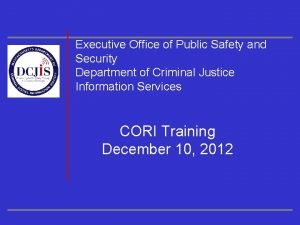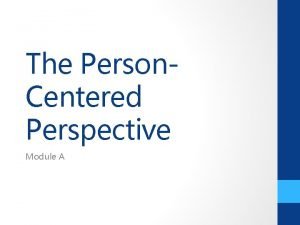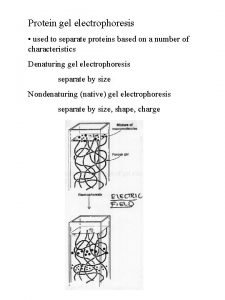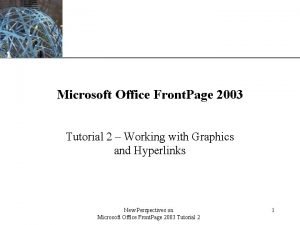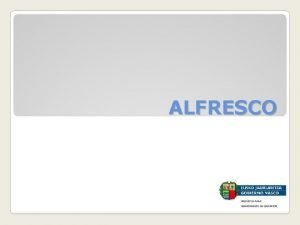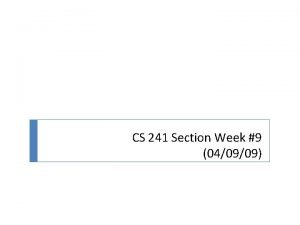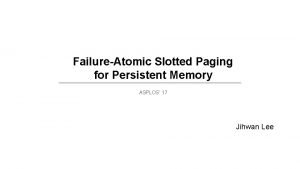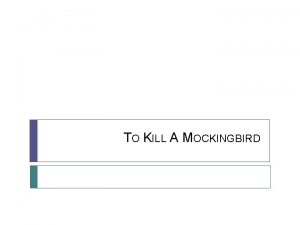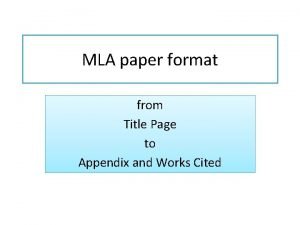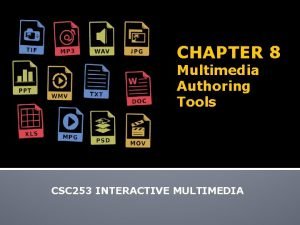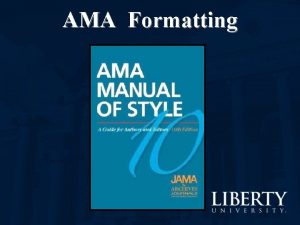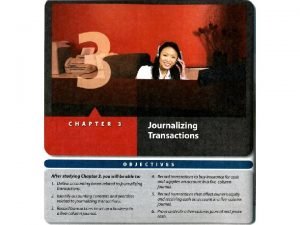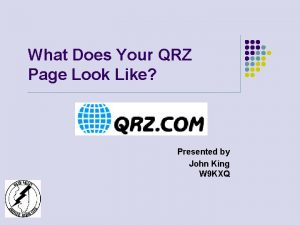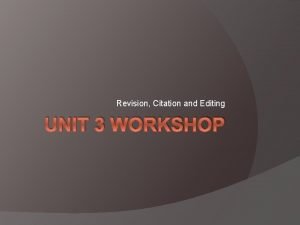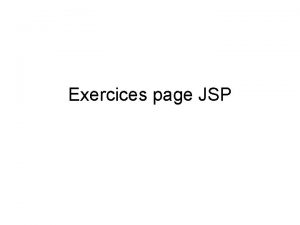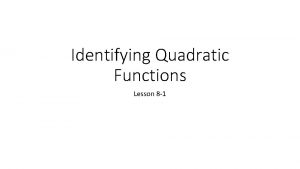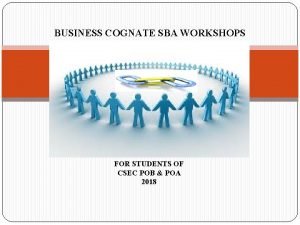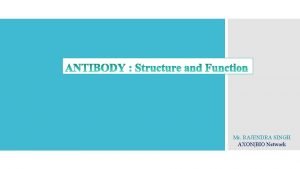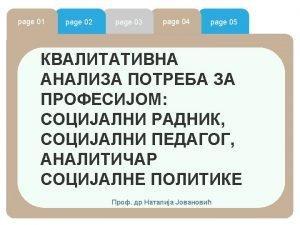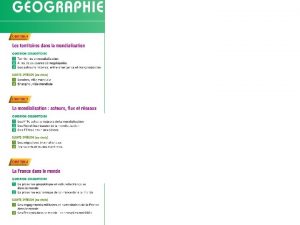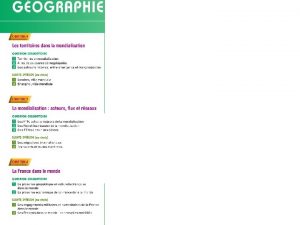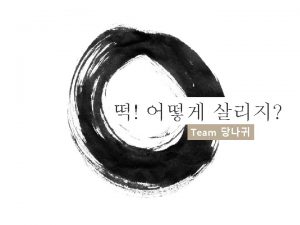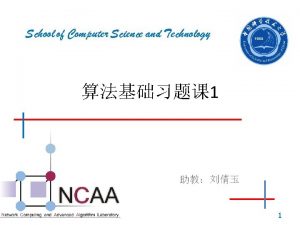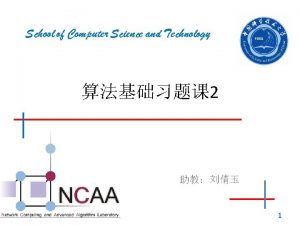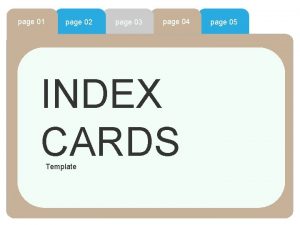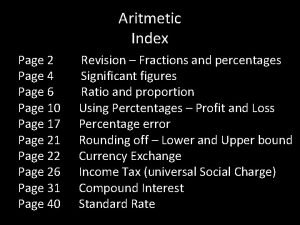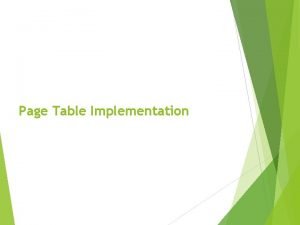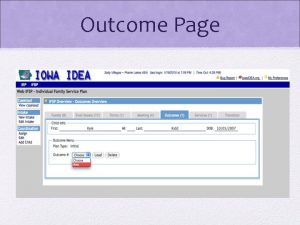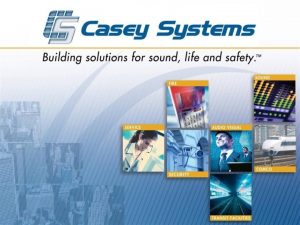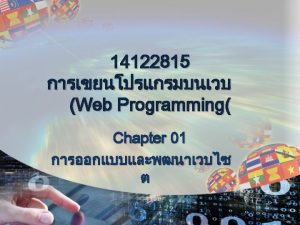Page 1 Page 2 Page 3 Page 4














































- Slides: 46

Page 1

Page 2

Page 3

Page 4

Categorizing the Components of an Information System Traditional System Components Elements of Organization’s System and the Enhancement People Employees Trusted employees Other staffs Non employees People at trusted organizations Strangers Procedures IT and business standard procedures IT and business sensitive procedures Data Information Transmission Processing Storage Software Applications Operating systems Security components Page 5

Categorizing the Components of an Information System Traditional System Components Elements of Organization’s system and the Enhancement Hardware System devices and peripherals System and peripherals Security devices Networking components Intranet components Internet Page 6

Exercises 1. Why should you by concerned about asset protection? 2. Identify and classify information contained in your personal computer. Based on the potential for misuse or embarrassment, what information would be confidential, internal or for public release? 3. In the case of BTSI, identify and classify information contained in there. Based on the potential for misuse or embarrassment, what information would be confidential, internal or for public release? Page 7

Department of Information Systems Subject : IT Risk Management Ethics Amna Shifia Nisafani, Anisah Herdiyanti amna@is. its. ac. id, anisah@is. its. ac. id

Naivety amongst organisation & some academics concerning benefits of codes of conduct – that an ethical code makes an unethical company ethical Mc. Cusker, (1998) Page 9

“I am amazed when I meet computer professionals in business and industry or even computer science teachers in colleges and universities who fail to recognise that their profession has social and ethical consequences”. Terrell Ward Bynum (2003) Page 10

What constitutes IS failure? Not solely from technical perspective! § Social, economic, political & ethical environment in which development takes place (Sauer, 1993) § Complex combinations of organisational, financial, technical, human, political factors Page 11

Why IS projects fail § Over commitment to projects § Managers unable to take impartial view of project § Social pressures that often exist within organisation Page 12

Where do the problems lie? § Organisations are communities of people § People compete for power & resources § Differences of opinions & values § Conflicts of priorities and goals § Bonds of alliance § Political dimensions Page 13

Where do the problems lie? § Developments in government sector can provide examples of externally set deadlines § Political, commercial implications § Inadequate testing § Decision-making Page 14

§ Almost every worker in industrialised countries use IS’s for daily work § Development & implementation of systems is responsibility of IS professionals § Conduct it by ethical attitudes Page 15

§ However. . Throughout duration of IS development project § Numerous activities and decisions to be made § Most will have an ethical dimension Page 16

§ Other different cases (with some overlap) - intellectual property privacy confidentiality professional quality fairness or discrimination liability software risks conflicts of interest unauthorized access to computer systems Page 17

What is Ethics? § The discipline dealing with what is good & bad & with moral duty & obligation § Individual human opinions and beliefs § Hard to define “most of our moral responses seem to be more a matter of intuitions and feelings than of reasoning and logical deduction – we are not always the rational creatures we would like to be” Gross, (1996) Page 18

What is Computer Ethics? § Analysis of the nature & social impact of computer technology and the corresponding formulation & justification of policies for the ethical use of such technologies § “Ethics for computing professionals is ethical rules & judgements applied in a computing context based on professional standards & a concern for the use of the computing product” (Gotterbarn, 1997) Page 19

What is professionalism? § To meet standards set by a professional body in terms of individual conduct, competence & integrity § A commitment to interests of all end-users and other stakeholders Page 20

Solutions § Means of education for IS developers who are able to integrate the ethical dimension into their work Page 21

Starting Point § Consider how professional issues in Computing are taught § Address & raise awareness of teaching professional issues in computing curriculum § Investigate different approaches to delivery § Essential issues need to be addressed to produce computing professionals in line with Engineering, Law, Medicine, etc. Page 22

§ Code of Conduct § Establish & maintain standards of professional competence, conduct & ethical practice § Syllabus to include ethical, legal, social issues § ACM Code of conduct Page 23

ACM Code of Ethics (1) § General moral imperatives: “As an ACM member I will…” 1. 2. 3. 4. 5. Contribute to society and human well-being. Avoid harm to others. Be honest and trustworthy. Be fair and take action not to discriminate. Honour property rights including copyrights and patents. 6. Give proper credit for intellectual property. 7. Respect the privacy of others. 8. Honour confidentiality. Page 24

ACM Code of Ethics (2) § Specific professional responsibilities: “As an ACM computing professional I will”: 1. Strive to achieve the highest quality, effectiveness and dignity in both the process and products of professional work. 2. Acquire and maintain professional competence. 3. Know and respect existing laws pertaining to professional work. 4. Accept and provide appropriate professional review. 5. Give comprehensive and thorough evaluations of computer system and their impacts, including analysis of possible risks. 6. Honour contracts, agreements, and assigned responsibilities. 7. Improve public understanding of computing and its consequences. 8. Access computing and communication resources only Page 25

ACM Code of Ethics (3) § Organization leadership imperatives: “As an ACM member and an organizational leader, I will: ” 1. Articulate social responsibilities of members of an organizational unit and encourage full acceptance of those responsibilities. 2. Manage personnel and resources to design and build information systems that enhance the quality of working life. 3. Acknowledge and support proper and authorized uses of an organization’s computing and communication resources. 4. Ensure that users and those who will be affected by a design have their needs clearly articulated during the assessment and design of requirements; later the system must be validated to meet requirements. 5. Articulate and support policies that protect the dignity of users and others affected by a computing system. 6. Create opportunities for members of the organization Page 26

ACM Code of Ethics (4) § Compliance with the Code: “As an ACM member, I will: ” 1. Uphold and promote the principles of this Code. 2. Treat violations of this code as inconsistent with membership in the ACM. Page 27

Ethical decision making: Case 1 § Joe is a database programmer - large statistical program needed by his company (actuarial requirements) - company programmers are encouraged to publicize their work § Joe has found himself stuck on a problem - Has persisted at this for several months. - His manager does not recognize complexity of problem. - She insists job be completed in the few days. § Joe remembers: - co-worker had given him source listings of their current work - he also has an early version of commercial software developed at another company Page 28

Ethical decision making: Case 1 § Joe studies these programs - Sees two areas of code which could be directly incorporated into his own program - He uses segments of code both from his coworker and from the commercial software - He does not tell anyone or mention it in the documentation. § He completes the project and turns it in a day ahead of time. § How does the Code of Ethics help us understand this case? Page 29

Applying the code: Case 1 § Joe violated professional ethics in two areas: - Failure to give credit for another’s work. - Using code from a commercial package that (presumably) was copyrighted. § If Joe only “looked” at co-worker’s source code: - Could he then write his own program and still have an obligation to give credit? § Yes: - He should have acknowledged credit in documentation. - (Some professional discretion possible here, especially if intellectual material is trivial. ) Page 30

Applying the code: Case 1 § Use of commercial software code was also not appropriate: - Joe should have checked to determine whether or not company was authorized to use source code before using it. § In general: - Desirable to share and exchange intellectual materials - But using bootlegged software is definitely a violation of code. Page 31

Ethical decision making: Case 2 § Three years ago, Susanne started her own consulting business - She is so successful she now has several people working for her. - Has many clients. - Includes work such as advising on network architectures, designing DBMSes, security. § Presently designing a DBMS for the personnel office a medium-sized (100 person) company. - Susanne has involved client in design process - Informs CEO, CTO and human resources head about system progress Page 32

Ethical decision making: Case 2 § Now it is time to make decisions about the kind and degree of security to build into system. § Susanne has described several options. § Because of cost overruns, client has decided to opt for a less secure system. - Susanne believes information they will store is extremely sensitive (performance evaluations, medical records for insurance claims, salaries, etc. ) § With weak security: - Employees on workstations could figure out how to access this data. - Online intruders would also have access Page 33

Ethical decision making: Case 2 § Susanne feels strongly that system should be much more secure. - She has tried to explain the risk. - CEO, CTO and HR all agree that less security will do. § What should Susanne so? - Should she refuse to build the system as they request? Page 34

Applying the Code: Case 2 § This case highlights issues involving privacy - Principle 1. 7 deals with privacy - Principle 1. 8 deals with confidentiality § Code guidelines state that: - “computer professionals are obligated to preserve the integrity of data about individuals…” - “… from unauthorized access or accidental disclosure to inappropriate individuals” § Code also specifies for organizational leaders: - Principle 3. 5 (enhance personal dignity) - Principle 3. 4 (assess needs of all those affected by system) Page 35

Applying the Code: Case 2 § Company officials: - Have an obligation to protect privacy of their employees. - Therefore they should not accept inadequate security. § Susanne’s first obligation: - Attempt to educate company officials (implied by principle 2. 7) § If that fails, she needs to consider her contractual obligations (principle 2. 6) in honouring assigned responsibilities. § We don’t have Susanne’s contract, but she may have to choose between her contract and her obligation to honour privacy and security. Page 36

Ethical Decision Making: Case 3 § Mary works in a large provincial agency dealing with alcoholism and drug abuse. § Agency administers programs for individuals with alcohol and drug programs. - Maintains a large database of information on clients who use agency services. - Some data files contain names and current addresses of clients. § Mary has been asked to look at the track records of treatment programs. - Reporting # of clients seen each month for past five years, length of client treatment, number of clients who return after program completion, criminal histories of clients. Page 37

Ethical Decision Making: Case 3 § Mary has been given access to all files in the agency’s mainframe computer - This data is needed to put together the report. § After assembling data: - She downloads it to the computer in her office. § The agency is pressuring her to finish report on the deadline. - Mary decides she must work from home over the weekend. - She copies data onto several disks and takes them home. - After finishing report she leaves the disks at home and forgets about them. Page 38

Applying the Code: Case 3 § This case resembles case 2, but raises several additional issues. § Issues involving confidentiality - Principle 1. 7 deals with privacy - Principle 1. 8 deals with confidentiality § Principle 2. 8 also applies: - Constraining access to authorized systems § Principle 3. 5: - Organizational leaders have obligations to “verify systems are designed and implemented to protect personal privacy and enhance personal dignity” § Also Principle 3. 3: - (Appropriate and authorized uses of organization’s resources) Page 39

Applying the Code: Case 3 § Government agency should have had policies and procedures to protect identity of its clients - Mary’s friends and relatives might accidentally discover files and inappropriate uses information. - Note that the files Mary used did not need to have names or other information in the records. § Agency should have removed identifying information from files Mary was allowed to use. - If this happened, it wouldn’t have mattered that Mary copied files to her computer. § Mary, unfortunately, was not attentive to ethical issues ahead of time. Page 40

Ethical decision making: Case 4 § Computer company is writing first part of an “efficient accounting system”. - Will be used by government. - Expectation is that this will save taxpayers a considerable amount of money each year. § Software engineer in charge of design assigns different parts of system to his staff. - Reports, Internal Processing, User interface § Manager is shown the system, and agrees it matches requirements. § System is installed, but staff find the interface so difficult to use that their complaints are heard by upper-level management Page 41

Ethical Decision Making: Case 4 § Result of complaints: - upper-level management will not invest any more money in developing the new accounting system - they go back to their original, more expensive system Page 42

Applying the Code: Case 4 § This case highlights issues involving quality of professional work § Code of Ethics advocates that: - professional strive to achieve the highest quality in both process and products (2. 1) § Principle 3. 4: users and those affected by a system must have their needs clearly articulated § Assumption in this case: - Failure to deliver a quality product is directly attributable to failure to follow a quality process. - Most likely the problems with interface could have been discovered in review process – peers or users (2. 4) § When harm results (in this case with taxpayers), failure to implement quality process clearly violates ethical behavior. Page 43

Ethical decision making: Case 5 § Contractor is determining requirements for an employment agency. - Client describes what is needed when displaying applications whose qualifications appear to match those for a particular job. - Client also further states that names of white applicants are to be displayed ahead of nonwhites. - Further states that names of male applicants are to be displayed ahead of female applicants. § Recall: ethical code asserts an ACM member will be “fair and take action not to discriminate” Page 44

Applying the Code: Case 5 § This case highlights issues involving fairness and discrimination § In this case, system designer is asked to build a system that, it appears - will be used to favour white males and - discriminate against non-whites and females § From this is would appear that: - system designer should not do what he or she is told, plus - should also point out the problematic nature of what is being requested and ask client why this is being done § Making the inquiry is consistent with 2. 3, 2. 5 and 4. 1. Page 45

Applying the Code: Case 5 § If client answers that they plan to use information to favour white males, then: - Computer professional should refuse to build the system as proposed. § To go ahead and build the system would violate: - 1. 4 (fairness) - 2. 3 (respecting existing laws) § It would also be inconsistent with: - 1. 1 (well-being) - 1. 2 (avoiding harm) Page 46
 Apa format for title page
Apa format for title page Executive office of public safety and security
Executive office of public safety and security One page profile
One page profile 16 page booklet layout
16 page booklet layout Tutorial dreamweaver 8
Tutorial dreamweaver 8 Sds-page procedure flow chart
Sds-page procedure flow chart Index front page
Index front page Alfresco hezkuntza share page
Alfresco hezkuntza share page Multilevel page tables
Multilevel page tables 11.html?page=
11.html?page= Catcher in the rye poem
Catcher in the rye poem Esrt metamorphic rocks
Esrt metamorphic rocks Preterite of regular verbs (p. 110)
Preterite of regular verbs (p. 110) Invalid login credentials in gst portal
Invalid login credentials in gst portal Slotted page structure
Slotted page structure Www.menti.fom
Www.menti.fom To kill a mockingbird movie page 174
To kill a mockingbird movie page 174 Appendices in research example
Appendices in research example Sesis attendance page
Sesis attendance page Consider a single level paging scheme with a tlb
Consider a single level paging scheme with a tlb Open your textbook
Open your textbook Il sogno palm desert
Il sogno palm desert Login page mockup
Login page mockup Four main perspectives in multimedia authoring tools
Four main perspectives in multimedia authoring tools Chapter 15 assessment biology answers page 445
Chapter 15 assessment biology answers page 445 Hatchet the book cover
Hatchet the book cover For page
For page Ama header
Ama header Tiered memory
Tiered memory What do you guess the doctor gives coyotito
What do you guess the doctor gives coyotito Basic website structure
Basic website structure On each journal page, the date is written
On each journal page, the date is written Qrz page
Qrz page What type of
What type of Page number
Page number This page left intentionally blank template
This page left intentionally blank template Exercice jsp
Exercice jsp Lesson 8-1 identifying quadratic functions
Lesson 8-1 identifying quadratic functions When to use polling or interrupts
When to use polling or interrupts Scdl student login
Scdl student login Math title page
Math title page Pob sba topics
Pob sba topics Signing naturally 2:9 answers
Signing naturally 2:9 answers Hvad er en landing page
Hvad er en landing page Goody proctor quotes
Goody proctor quotes Axonbio
Axonbio Cover page essay
Cover page essay

